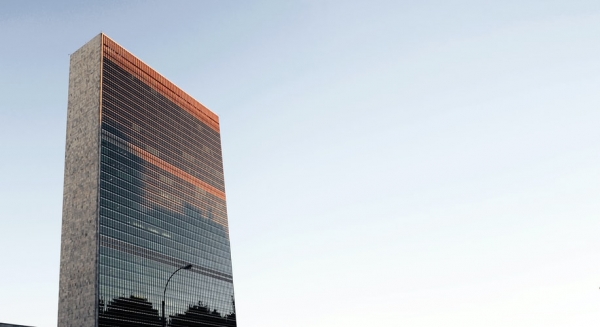2020 marked the twentieth anniversary of the United Nations Security Council (UNSC) adoption of resolution 1325 on Women, Peace and Security. This was a milestone that contributed to emphasizing the role of women in peacemaking efforts and reaffirmed their crucial role in the process of resolving armed conflicts. To commemorate the anniversary and to reflect upon the outcomes and challenges of the resolution throughout the past two decades, Radhika Coomaraswamy, former United Nations Under-Secretary-General and Special Representative on Children and Armed Conflict, wrote the report “UNSCR 1325 at 20 – Reflections on the Women, Peace and Security agenda,” published by The Centre for Humanitarian Dialogue.
In order to understand the relevance of the resolution, its historical context is key. As Coomaraswamy explains, the tragic and deadly conflicts that characterized the decade of the 1990s – particularly the genocide in Rwanda (1994) and the wars for independence in former Yugoslavia (1991–1999) highlighted the urgency to discuss and cultivate a comprehensive view of the role of women in armed conflict. While initially the focus was on sexual violence, other aspects have recently been at the core of the debate too, such as women’s participation and representation in peace processes, military settings, peacemaking institutions and counter-terrorism operations. However, the focus given to women’s participation has not been fully implemented in practice. Women are still prevented from taking an active role in peace negotiations, and therefore their visions, issues and solutions can be overlooked. Even when there are quotas that require the presence of women, their voices are too often silenced. This also affects post-conflict recovery, which often lacks a longer term vision for development, gender-specific needs and female empowerment.
Throughout the report, Coomaraswamy alternates the writing of facts or case studies with debates and more active discussion. For example, she mentions the divergence between different lines of thought regarding the agenda’s justification and objectives. In fact, some experts claim that through increased participation of women in negotiations and peace processes, topics such as health, education and, more generally, those of social concern are more likely to be included in the agreement. Moreover, there is greater attention towards humanitarian issues, which would prove how women’s participation is fundamental for a more sustainable and long-lasting peace. Yet, on the other hand, many reject these statements, arguing that those only reinforce stereotypes of women, and that there is still no clear evidence that their participation promotes a more sustainable peace. The author resolves the debate by highlighting how women’s representation is not actually hampered by the question of operational effectiveness (which would be a secondary matter), but rather by men’s political resistance to women’s equality.
The report ends with the author’s suggestions of three key actions that the Women, Peace and Security agenda needs to undertake to achieve its goal of a more fair and equitable society. First, local communities must be consulted during the formulation of guidelines; second, the agenda should not only focus on accountability for sexual violence and women’s representation, but it should also deal with issues such as livelihoods and post-conflict economic and social recovery; and third, women must be included and be proactive in all levels and issues of international decision-making and concerns, so that they can actively contribute to strategies, negotiations and policies.
To know more, please read:
hdcentre.org/wp-content/uploads/2020/12/UNSCR-1325-at-20.pdf
Author: Laura Manzi; Editor: Andrew Goodell







